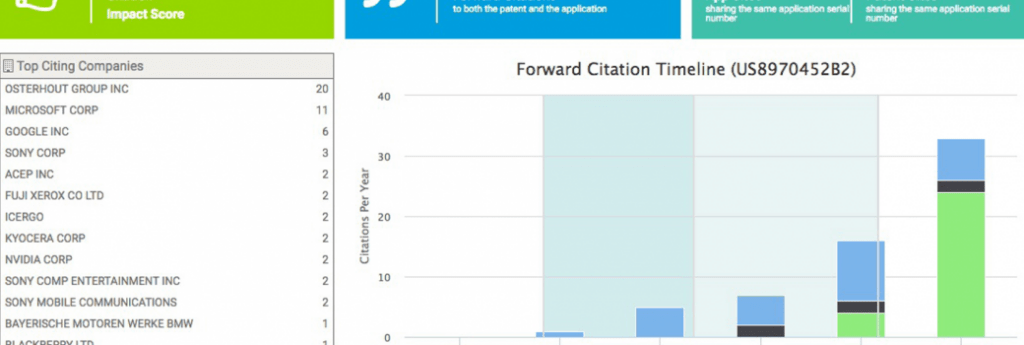by Mike Caldwell, Director of Business Development at Anaqua
 Citation analysis helps assess patent quality and determine how patents affect the competition and the world at large. Citations come in two principal forms: 1) Forward and 2) Backward (aka reverse). In reality, forward citations are a derived artifact of reverse citations. A great number of forward citations for a given subject (published application or issued patent) may imply its importance in a given technical space, monetary value, potential for being infringed, or its shared interest by others in the technology space.
Citation analysis helps assess patent quality and determine how patents affect the competition and the world at large. Citations come in two principal forms: 1) Forward and 2) Backward (aka reverse). In reality, forward citations are a derived artifact of reverse citations. A great number of forward citations for a given subject (published application or issued patent) may imply its importance in a given technical space, monetary value, potential for being infringed, or its shared interest by others in the technology space.
There are a few principle reasons to cite patents. First, backward citations provide examples of the existing related art. Applicant-provided IDS citations let the examiner know the drafter considered, and carefully constructed the claims around, the prior art. Second, examiners cite patents and applications as examples of general prior art. Most importantly, examiners cite patents and applications as blocking subjects in their rejection arguments for either novelty (102 rejection) or obviousness (103 rejection).
An analyst generally identifies less than half of the citations in a given analysis. For new patents, up to 100% of the citations may go unidentified. Remember, applicants and examiners can cite either a granted patent or a published application. As it turns out, examiners cite applications far more often than they cite patents due to temporal co-pendency and the phenomenon of multiple-discovery.
For instance, the analysis above shows a patent and its parent application received 62, not 2, forward citations. Notice the two blue plot bands behind the bar chart. This timeline illustrates the filing of the application, application publication, and time to grant. This application received 29 citations before the patent even granted, citations a traditional citation service would not report.
Patents in the first, dark blue, plot band are from applications filed prior to this application’s publication date. They were invisible and thus unavailable to the citing applicant. This means the citing applicant filed their application before they could have known about the possible prior art lurking in any of the co-pending cited documents. As a result, citations in the first plot band can only be from examiners or, in some cases, self-citations because no one else can see them.
If you only look at citations to the patent itself, you will never realize how strong a citation profile actually is and how it may lead to infringing products of competitors.
Mike Caldwell is the Director of Business Development at Anaqua, Inc., and Co- founder and President of recently acquired Patent River Inc., a leading provider of unique patent data insight to the IP industry. As a Registered USPTO patent agent since 2002, Mike has developed and prosecuted semiconductor, electronics, electro-mechanical, mechanical, semiconductor processing, and business practices patents worldwide.

